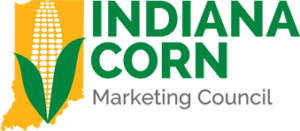Case Studies
The best way to learn how to identify, evaluate and manage agricultural risk is to apply what you’ve learned to real-life farming scenarios. Below are four cases of farms facing different challenges and managing a variety of risks. Choose a case study, read through it, and work through the key questions at the end. See if you can identify the types of risk each farm faces and think through the best ways to manage risk in each scenario.
C&D Farms: Thinking about Strategic Direction
After four generations, C&D Farms is at a crossroads. With children unwilling to take over the farm, owner/operator Joe Meier has to decide which specialization strategy would be best for himself, as well as his head supervisor who has the potential to be the owner/operator in the future. Joe will have to employ risk-reduction strategies if he wants to uphold the farm’s profitability.
Deer Creek Farms: Tradition Into the Future
The future of Deer Creek Farms is up for grabs. The agricultural landscape was very different 32 years ago when George and Carol first took over the family farm. Now, with their pending retirement, it’s clear that their two children, David and Emily (along with their spouses) have different ideas regarding which direction the farm should head. The family must plan to successfully transfer ownership, while keeping risk at a manageable level.
Huffman & Hawbaker Farms: Navigating Family Businesses
It’s all about relationships at Huffman & Hawbaker Farms. Over the years, constant experimentation with new enterprises has helped keep the operation nimble and productive. But it’s the many enduring business relationships forged by General Manager Levi Huffman that has proven to be the farm’s main anchor. Recently, it’s become clear to Levi that times are changing, and soon, a new generation of landowners will be assuming control, bringing with them a whole new range of risks.
The Perfect Storm: Risk Management with a Lender’s Perspective
While there are many reasons why agricultural operators need to effectively manage risk, this case study examines why it’s critical for farm operators who rely on borrowed funds to include a lender’s perspective when developing a risk management plan. Using a coordinated approach makes sense because all interested parties have a stake in reducing overall risk.


